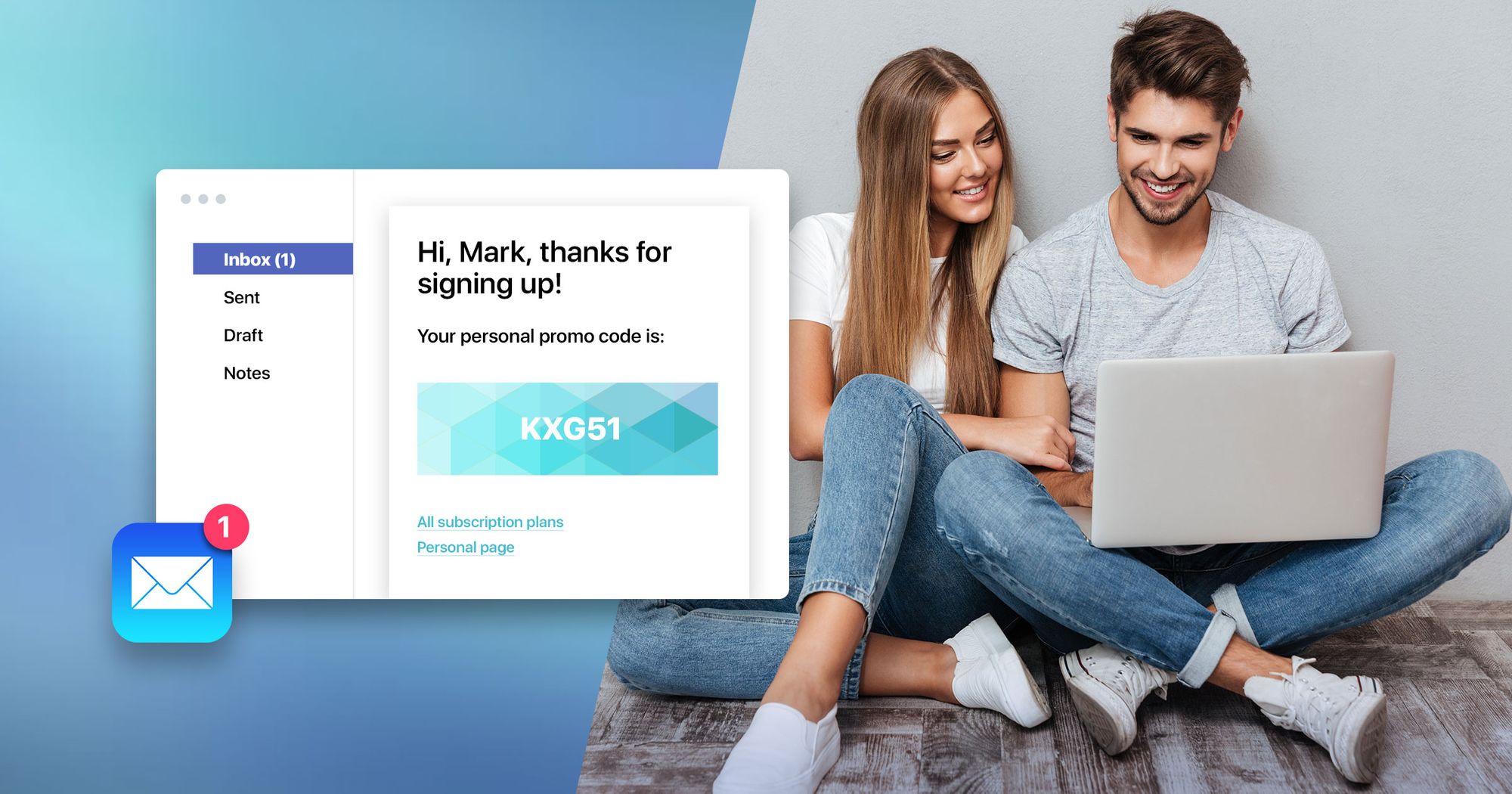Welcome emails set the tone for how your new users expect to interact with your brand. Greeting newcomers with the right messages is important for building their loyalty, increasing retention and lifetime value. Learn the best practices for creating effective welcome emails!
The success of your customer onboarding efforts is highly dependent on the first few touchpoints, and it all starts with a welcome email.
What is a welcome email?
A welcome email is the first touchpoint with your newly acquired user. Usually it's a friendly hello that encourages them to interact with your product, gently guides them to the first purchase or just simply shows that you care.
Are welcome emails effective?
According to the recent research,
- Welcome emails get 4x more opens and 5x more clicks than regular marketing emails;
- The typical open rate for a welcome email is 50%, which means it can be 86% more effective than standard newsletters;
- 76% of people expect to receive a welcome email immediately after creating an account or subscribing;
- Users who get a welcome email are typically 33% more engaged and willing to interact with a brand.
What makes a good welcome email?
A good welcome email is informative, neat, and engaging. It briefly explains the basics, creates interest and tells you what to do next.
Ideally, your welcome email delivers on the promise of your newsletter (which you made in the signup form) and contains an incentive to stimulate further engagement. Assuming that you are building your subscriber list organically, which is way preferred over renting an email list, you want to follow best practices for welcome emails. You will find them in this blog post.
☝️ Even though there are best practices, it's important to remember that different businesses have different audiences, so A/B/N testing is always highly recommended.
Examples of good welcome emails
Figma
Figma is a popular browser-based UI/UX design tool. Its welcome email greets new users with a logo, expresses excitement about a new user and offers helpful tips on how to start using the application.

Best practices to follow:
❇️ Keep your copy short, clear and actionable.
❇️ Be precise about your CTA: in the example of this welcome email from Figma, the call-to-action button button takes users to the dashboard where they can start creating.
Grammarly
Grammarly is a digital writing tool that processes language with the help off artificial intelligence. Its welcome email is inspiring and informative. Once again, it also offers a short guide on how to use the service, explains its value. With the help of gifs and screenshots, the functionality is shown in a visual, easy-to-understand way.

Best practice to follow:
❇️ Mention a limited list of values your welcome email reader may get from your product. If you succeed in engaging a customer with this very first communication, you'll have all the time in the world to talk about more features and use cases later on.
Asana
Asana is a popular project management solution that you even might be using in your team. Asana's welcome email contains all the tips a user might need to start working with the tool. The CTA takes new users to the dashboard where tips appear as they study it.

Best practice to follow:
❇️ Make your welcome email work in concert with other onboarding activities — for example, add links to the video tutorials to the body of your first email or, like Asana, have useful tips in your interface to keep familiarizing new users with your product in the right context.
Airbnb
Airbnb might need no introduction as it's a well-known online marketplace for arranging or offering lodging, primarily homestays, or tourism experiences. Its welcome email is a colorful greeting that motivates new "community members" to start exploring the experiences Airbnb offers. The email contains all the buttons a new user might need to help them get the most out of the service.

Best practice to follow:
❇️ Treat your welcome email as an opportunity for your brand to shine brightly. Feature compelling imagery that tells your brand story and speak with your audience in the tone of voice that both resonates with your customers and makes you stand out from other services.
So, how do you make a good welcome email?
To sum it up, there are no strict rules on creating a well-performing welcome email. However, there are certain traits that all effective welcome emails share. Neat, informative and engaging emails will make a great contribution to the success of your marketing communications.
Learn which tools will help you to create an effective welcome email — explore what Pushwoosh has to offer within its email marketing solution. Or discover our customer engagement platform in its full capacity on a personal product tour:

